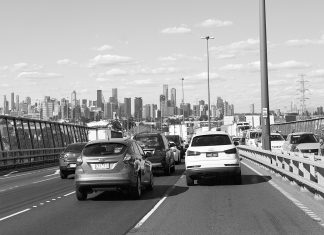RISING fares for public transport could prove to be a devastating blow to sustainable futures.
That is the opinion of Public Transport Users Association regional spokesperson Paul Wescott after the State Government increased V/Line ticket prices by an average of 6.8 per cent as of 1 January.
Regular Latrobe Valley commuters face a blowout of up to $350 per annum, with a monthly full fare from Traralgon to Melbourne jumping from $429.50 in 2012 to $458.60 in 2013.
Single return trips inflated by $3.20 to $50.40 on peak, while off peak rose to $35.20 from $33.
State Transport Minister Terry Mulder blamed the size of the increase on the previous Labor government’s “mismanagement of public transport”, with only 1.8 per cent of the price rise attributed to inflation.
A recent statement from Mr Mulder said the other five per cent was related to part of the former Labor government’s Victoria Transport Plan, which has since been shelved, and the revenue would go back into public transport.
“Labor left behind fare increases and a neglected public transport system that was failing Victorians,” Mr Mulder said.
“The extra fare revenue will be used to help continue to build the network, but it will only make up a fraction of the extra money the government is investing in improved public transport for regional Victorians.”
Mr Mulder said the fare increases would raise about $28 million annually, with current transport fees paying for about one third of the public transport network with the rest subsidised by the state.
PTUA’s Mr Wescott slammed the Coalition for fingering the previous leadership, saying it was an illegitimate excuse for an established government, and that the VTP scrapping raised questions about the need for such a hefty fare increase.
“It was a price rise factored in for a specific purpose that no longer exists (VTP), certainly not in its full form and I don’t think it’s been justified in that regard,” Mr Wescott said.
“It will only make public transport comparatively more expensive and the effect of that will be that it will reduce public transport use.”
He said the projected $13 billion east-west tunnel was one area from which money could be diverted in order to ease the pressure on commuters’ back pockets.
“It’s going to cost an amazing amount of money and I think transport users would be extremely annoyed to say the least if some of the fare rise money was put into funding a road toll in the north of Melbourne,” he said.
“Hopefully it won’t get funded by the Federal Government, but if it did and the state had to cough up its share as well, it would soak up a massive amount of money that could be put into more sustainable transport initiatives.
“We’re trying to get to a sustainable sort of future with an emphasis on sustainable means of transport, which is cycling, walking and public transport, and getting away from road expenditure but suddenly this $10 billion road tunnel has come to the top of the Coalition priority list from nowhere.”
Mr Mulder said to date the government had allocated $15 million for development work on the east-west tunnel, and “by contrast, we have allocated $50 million to major planning works for the metro rail tunnel under the city and major construction work is underway on the multi-billion Regional Rail Link project, highlighting this Government’s commitment to improved public transport for all Victorians”.
The Opposition Transport Minister did not respond by the time of print.
For the full list of increases visit www.ptv.vic.gov.au










